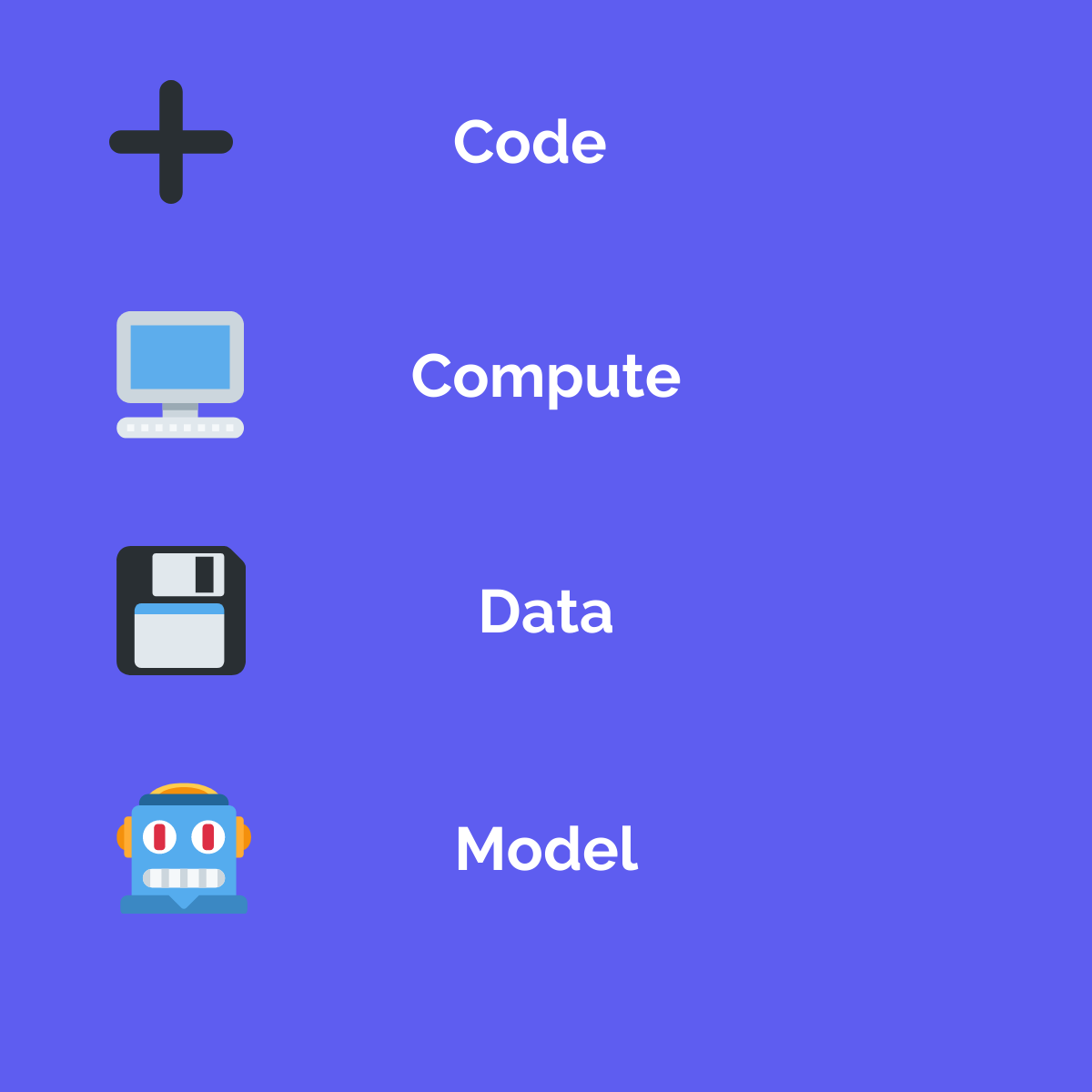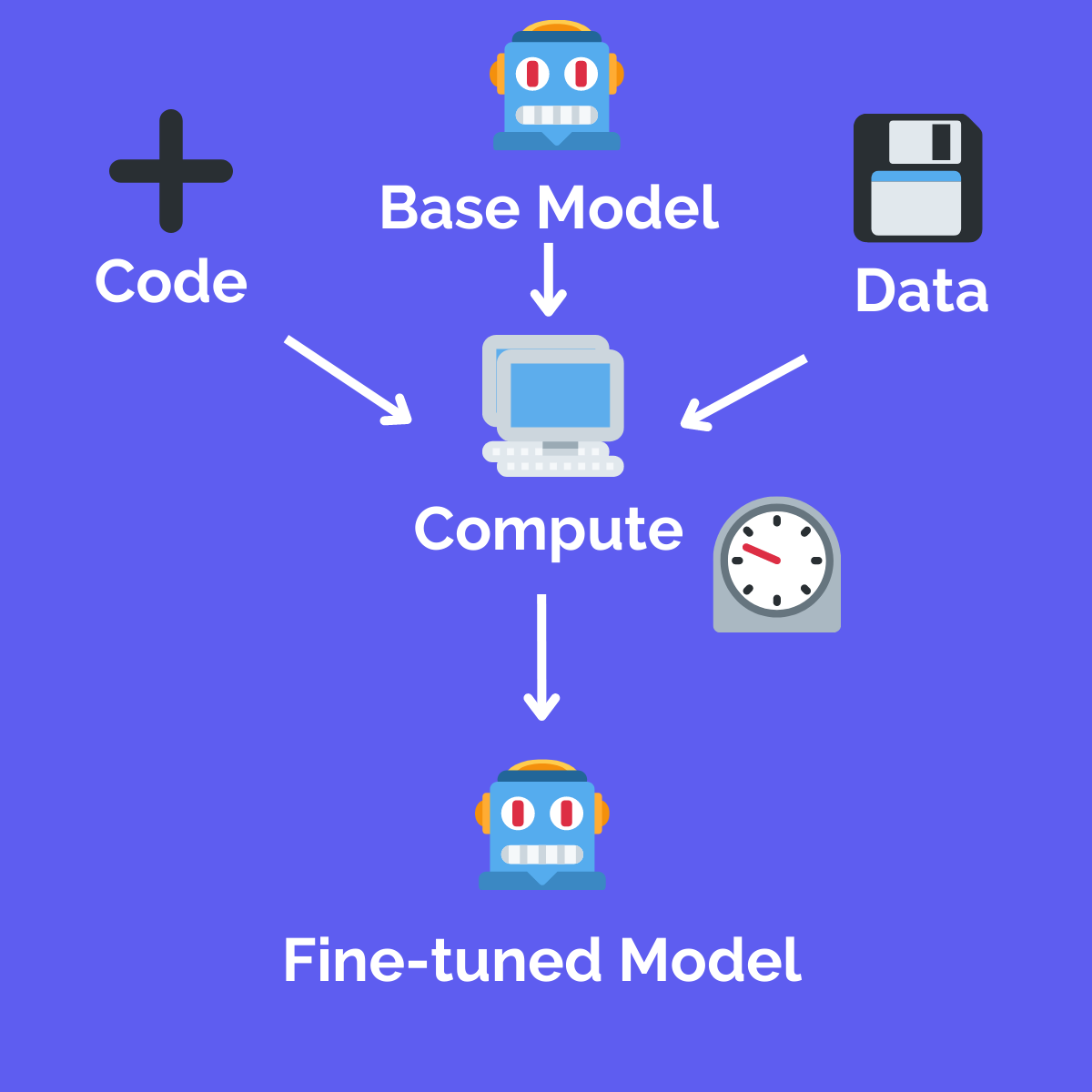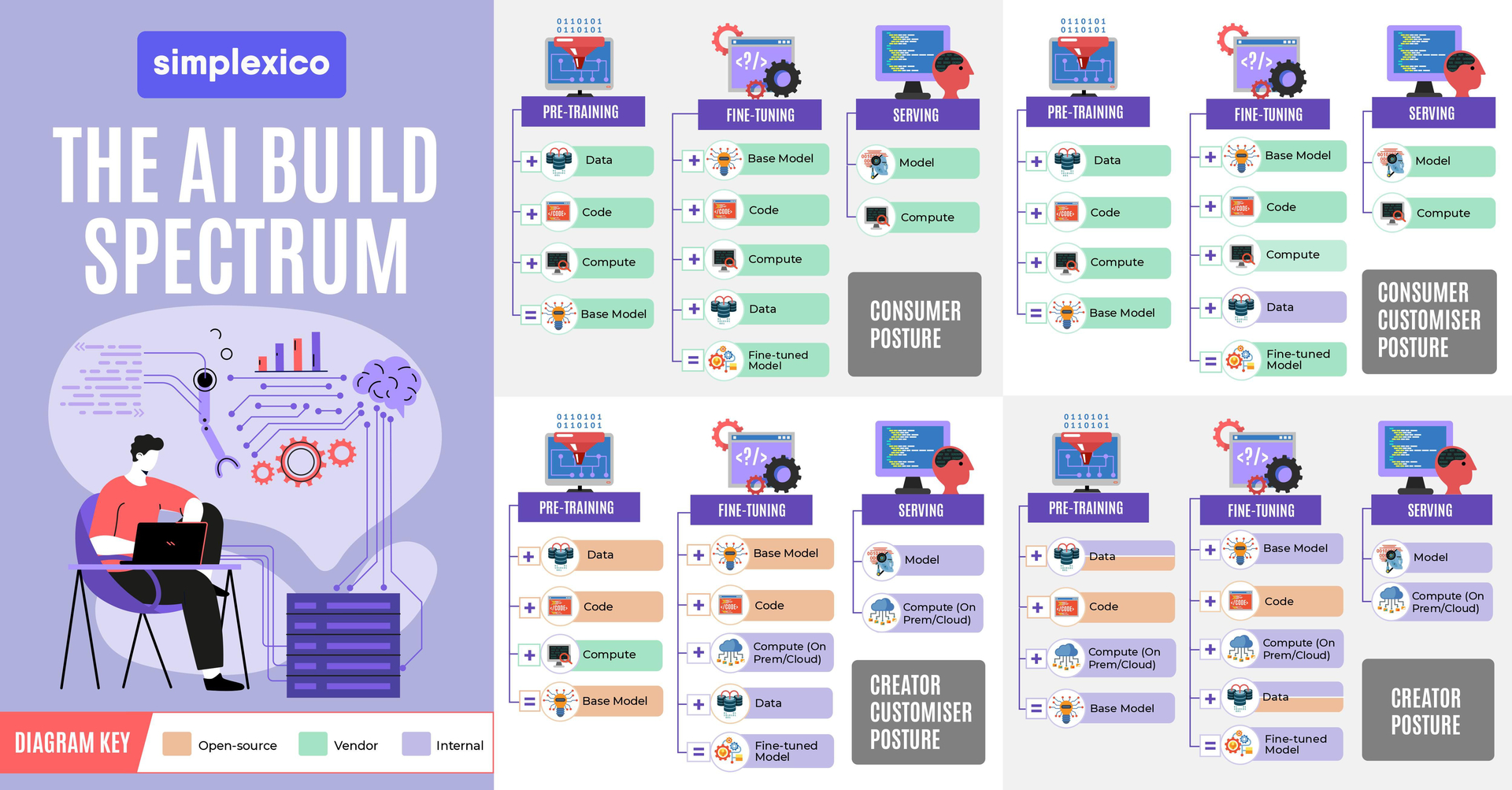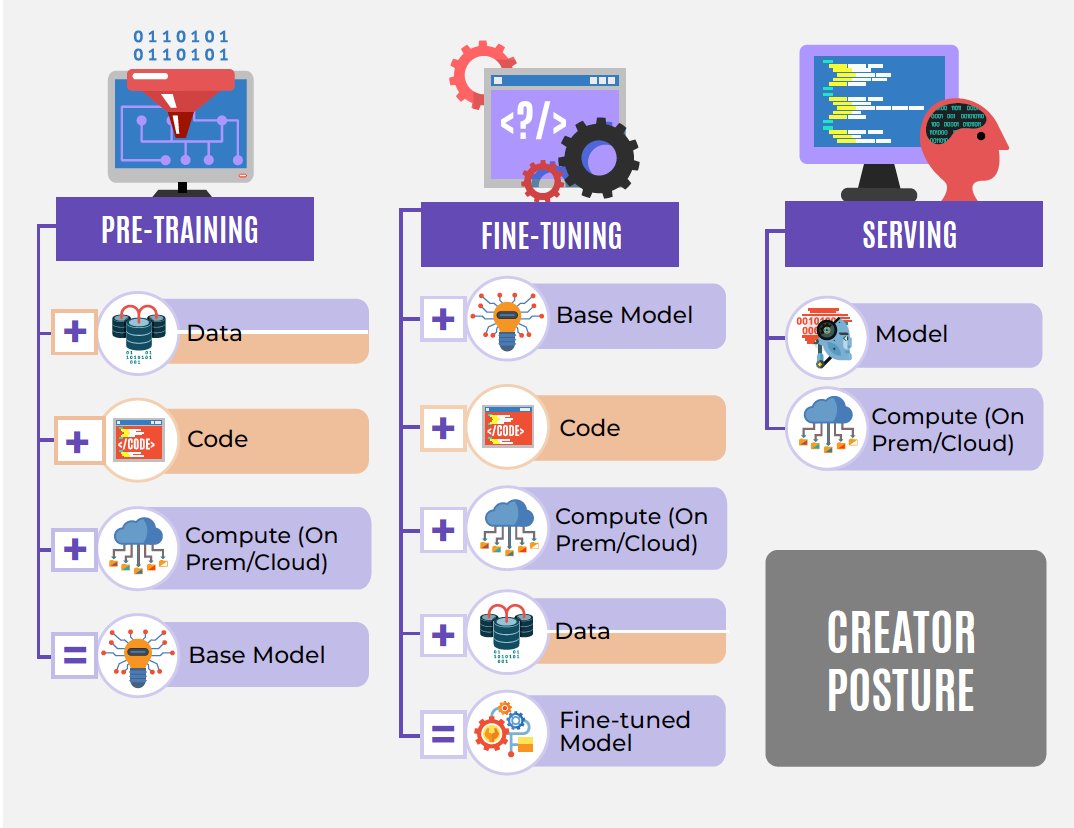
AI Build or Buy? The Options for Law Firms
Uwais Iqbal • 2023-07-12
The Build vs Buy question is well understood when it comes to software. Does the same distinction apply with AI or are there additional considerations to account for? This article delves into Build vs Buy question for AI and explores the nuances in Building AI.
Traditional Software - Build vs Buy
With traditional software there are two extremes - either build it yourself or go buy it from the market. That effectively is the dichotomy presented by the Build vs Buy question. Developing software is a relatively simple process that doesn't involve lots of moving parts. However, when we look at AI, the Build vs Buy distinction isn’t as straightforward. It’s actually more of a spectrum when it comes to AI.
AI - Build vs Buy
🛍 Buying AI
Buying AI can be understood as purchasing a specific AI-enabled application from a vendor. Just as one might purchase an electrical appliance like a toaster or a kettle from a supermarket. These AI-enabled applications perform particular tasks and fulfil a certain defined set of needs.
Examples of such AI-enabled applications in the legal sector include offerings from vendors such as Harvey, Spellbook, Kira etc.
🏗️ Building AI
Just like building software is worlds apart from buying software, so too is building AI worlds apart from buying AI. In fact, AI is more complex than software since it involves a number of moving parts that all come together in a particular way to give rise to an AI model. Before we can dive into the different ways of building AI, we need to understand what goes into building AI.
Components of Building AI
AI is fundamentally different to software. With AI there are a number of core components involved across three different contexts. We can draw an analogy and say that AI is a lot like cooking a meal.
Let’s start with the three main components:
- The underlying code for the algorithm or the recipe
- The compute resources where all of these elements are combined to create the model or the kitchen where everything is prepared
- The data or the ingredients
- The three parts come together to give rise to the derived product; the model or the final dish.
Three Stages of AI
There are also three different stages to creating AI which are relevant to the different build vs buy options:
- Pre-training
- Fine-tuning
- Serving
Stage 1 - Pre-training
In the pre-training stage, the code for the algorithm is used with data in a compute resource to train an initial model.
Stage 2 - Fine-tuning
In the fine-tuning stage, the pre-trained model is further refined with additional data using the code for the algorithm in a compute resource to create a more refined model focused for a particular domain or for a particular task.
Stage 3 - Serving
In the serving stage, the model is served in a compute environment and packaged in an API so it can be called on by other software services and the AI capability can be consumed.
The AI Build Spectrum
Building AI can be understood as going one level higher to interact with the underlying technology through APIs or actual code. AI can be built through four different postures across a spectrum that spans from one extreme of a consumer posture to another extreme of a creator posture.
The four postures are as follows:
- The Consumer Posture
- The Consumer Customiser Posture
- The Creator Customiser Posture
- The Creator Posture
🍴 Consumer Posture
The Consumer Posture lets you just get on with consuming and using AI. It's someone else's job to worry about pre-training, fine-tuning and serving the AI system. You just consume it and can build applications around it.
A typical use case of building AI in The Consumer Posture involves plugging into Azure Cognitive Services or Open AI’s APIs to use a model for a particular task.
The Consumer Posture is simple and easy to get started with since no AI skills are needed. You just need to know how to call an API. The pre-training, fine-tuning and serving are all arranged and managed by the vendor so there is no infrastructure services to manage.
However, the models available through such services tend to be too generic and horizontal for specialised legal tasks. Since you are just consuming AI, there is little to no control over bias, risk and governance with using AI in this posture. The Consumer Posture involves sharing data with a vendor so may be off limits for certain use cases and datasets.
🍴🎨 Consumer Customiser Posture
The Consumer Customiser Posture goes a little further by allowing you to customise and fine-tune the underlying model on your own data.
A typical use case of building AI with the Consumer Customiser approach is fine-tuning a GPT-x model using Open AI's APIs so you can get better performance on legal content.
The Consumer Customiser Posture is simple and easy to get started with. Since the fine-tuning is offered by a vendor as a managed service there is no infrastructure to worry about. However, fine-tuning involves sharing data with a vendor and there is a question around who owns IP of the fine-tuned model hosted and managed by the vendor. Since you are just consuming AI, there is little to no control over bias, risk and governance with using AI in this posture.
👷🏻🎨 Creator Customiser Posture
The Creator Customiser Posture takes a different approach by leveraging recent advancements in open-source foundational models. These models can be brought inside an organisation, customised on internal data and then used internally without having to ever worry about a third-party or vendor.
A typical use case of building AI with the Creator Customiser Posture involves using an open-source large language model and fine-tuning it on internal data so that the model understands the specifics of legal language for a particular practice area e.g construction litigation.
The Creator Customiser Posture means that no data has to ever leave an organisation or be shared with a third-party vendor. It mitigates risks and concerns around data privacy and security and means that the IP of the model is entirely owned by the organisation. The fine-tuning and serving stages can be managed within the organisation through a cloud platform like Azure AI or through on-premise resources so requires some level of AI skills and maintenance around infrastructure. With greater control over the fine-tuning and serving stages, there is the opportunity for greater control around bias, risk and governance of AI to ensure fairness and safety.
👷🏻 Creator Posture
The Creator Posture is taking full control of the AI creation process by bringing pre-training, fine-tuning and serving in-house within the organisation.
A typical use case for building AI with the Creator Posture involves training an in-house foundational language model from scratch that can then be reused to power a whole host of different applications.
Much like the Creator Customiser Posture, the Creator Posture means that there is no need to share data with a third-party vendor and there is complete control and IP ownership of AI creation. Controls can be put in place around AI governance to mitigate for bias and risk. However, a large investment will be needed to curate the correct datasets internally as well as perform the pre-training either using a cloud platform like Azure AI or using on-premise hardware.
Law Firms, To Build or To Buy AI?
A question currently facing many law firms and legal teams is around whether to simply buy an AI solution from the market or build AI internally or simply just wait things out. With the advent of Microsoft 365 Copilot and Bing Enterprise Chat, Horizontal AI will become accessible to every organisation across the planet. There will no longer remain a competitive advantage in simply using an AI tool or buying an AI application from a vendor.
The real competitive advantage that will enable law firms and legal teams to future-proof themselves and stay ahead of the competition will be through building AI that leverages internal datasets that are specific to a firm and its practice areas. A firm’s intellectual capital is what sets it apart in the market. Building out AI that leverages that internal data to enhance and scale intellectual capital is what will make a firm next-generation.
But how can firms go about building AI? The AI Build Spectrum outlines the four different postures that are available. With the sensitive nature of internal data within a firm, data protection and security is of paramount importance. The Creator Customiser Posture offers a viable pathway for firms to leverage the latest and best in-class of AI technology through open-source LLMs that are brought inside the firm and further refined and fine-tuned on internal data.
However, this assumes that firms have some level of good hygiene with their internal data and are comfortable with the tenets of private Cloud through providers like Azure or AWS. With the recent Microsoft Inspire 2023 conference [1], Microsoft are positioning their Azure AI as the platform for building AI within the enterprise. Alternative to the cloud, dedicated on-premise hardware can be procured to enable the Creator Customiser Posture internally.
Conclusion
The AI landscape has shifted significantly over the past 6 months but the dust is beginning to settle. The AI Build Spectrum outlines the available options for firms when it comes to building AI. Big tech vendors like Microsoft have realised the need for enabling organisations to build their own AI and are working to empower organisations with their Azure AI platform.
Using or buying AI is becoming table stakes for every organisation. The real competitive advantage for firms will come from their ability to leverage internal data to build their own AI systems. The dust is settling and as firms look to build out an AI strategy, building AI should feature high on the list.
Not having access to AI skills within your firm shouldn’t be a blocker for building AI. At simplexico, we are into the depths of AI working to figure out the technical how behind the Creator Customiser Posture. Whether your firm is looking for help making sense of AI, guidance with an AI strategy, or looking to build out an AI pilot we’d love to help. You can get in touch with us at [email protected] .
[1] - https://www.youtube.com/watch?v=RhwVMt_XCUE
Resources












